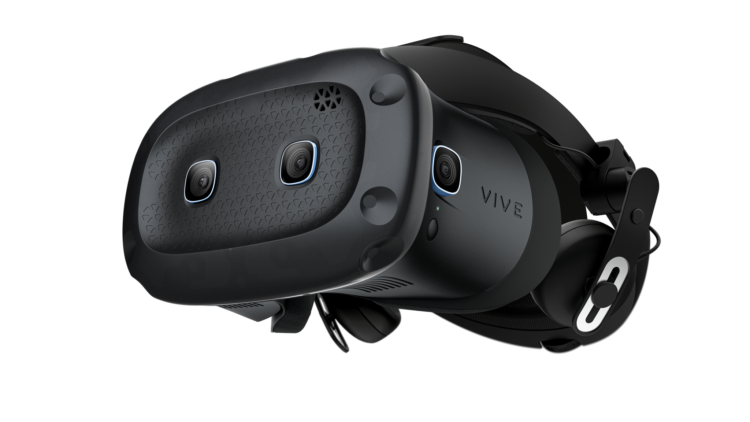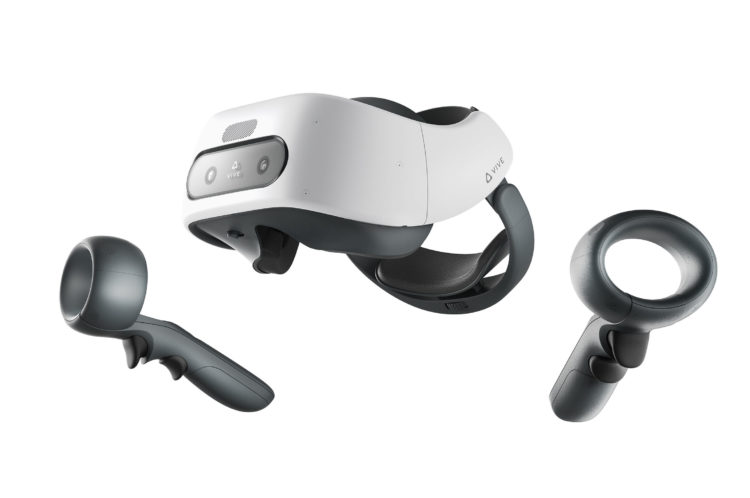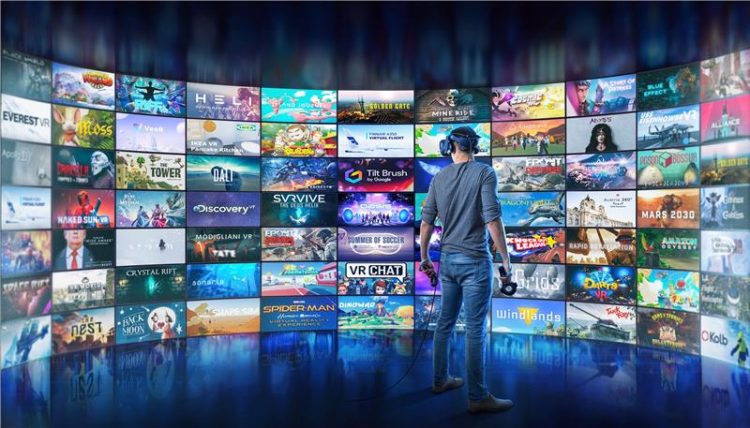With 2021 well underway HTC general manager Graham Wheeler has reflected back upon the state of VR in 2020 and predicts important VR trends for 2021. He covers a variety of topics, including consumer and business VR, as well as the growing importance of emerging technologies such as 5G. All of these spheres will indirectly influence how virtual reality impacts fitness and exercise moving forward, and I also asked him for his thoughts on VR fitness and he’s given us some of his favorite, and surprising picks from Viveport, including lots of titles that are completely new to me.
I’ve published Graham’s commentaries below in full, but I’ve also added some parenthesis of my own to explain some of the terms and abbreviations he uses for the unfamiliar reader, as well as provide some Youtube videos and weblinks that better illustrate some of the subjects under discussion.
If you’re just interested in his thoughts on VR fitness I’ve included those at the bottom of the article, with links to his recommended titles that you can try out on Viveport. Often described as Netflix for VR, Viveport is a monthly subscription service that gives you instant access to hundreds of VR titles. It’s an outstanding way for VR newcomers to try out loads of high-quality PCVR titles all at once, and really sample what PCVR can offer.
HTC General Manager Graham Wheeler 2020 Reflections
VR Industry
To say 2020 was tumultuous would be generous. So firstly, I hope everyone has been keeping safe and well.
When I think about the industry in 2020, it was a landmark year for VR, and actually for the overall XR vision of where we’re headed to. (XR—an umbrella term encompassing augmented, virtual, and mixed reality technologies https://www.wired.com/story/what-is-xr/)
This year the demand for all home-based entertainment increased, as a direct result of COVID restrictions. But that doesn’t tell the whole story. This year has seen several huge games in VR, Half-Life: Alyx, Star Wars: Squadrons, and Microsoft Flight Simulator is hotly anticipated.
And in B2B (Business to business), remote working was proven to work, meaning a rise in tools that support remote collaboration. The adoption of VR-based tools has been increasing across a range of industries for everything from designing products, to carrying out basic training for employees.
Consumer
Let’s have a look at consumer VR first. COVID was one of several factors which continued the acceleration of consumer VR. Normally there’s a seasonal pattern to sales, but we saw more of a steady upward line in 2020 instead of the usual cyclical trend.
It’s important to note that the market has started to mature more and segment. Facebook’s Quest 2 showed there’s enough demand for more casual games and a pick-up-and-go experience. But high-end graphics and experience require a PC, and just as with the console vs PC market, we’re seeing the VR industry segment along those lines.
There were a number of AAA games coming to VR this year. Half-Life: Alyx was a thrilling demonstration of what can be achieved when a game is designed for VR. It was intuitive, heart-stopping, and a worthy addition to the fabled Half-Life story. Our Vive Cosmos Elite launched at just the right time for people to enjoy Half-Life: Alyx, and we heard a lot of people loved the experience. Star Wars: Squadrons was another favorite for a lot of people – the immersion of VR changes the way you play, and Microsoft Flight Simulator will be an early Christmas present for a lot of people, too.

A wider trend this year has been privacy – we saw it with the various COVID tracking apps, and that kept the topic in the public eye. Facebook has seen a visceral reaction from a number of developers and users due to the requirement of using a Facebook account for the Quest 2. It remains to be seen exactly how big a barrier that creates, but VR is a unique technology in how it effectively introduces multiple cameras in your home, so privacy is an entirely valid concern. We remain committed to safeguarding user privacy and feel that will continue to be an important part of the decision-making process of consumers.
Industry
A part of the VR industry hard hit this year was Location Based Entertainment (LBE). That’s set to change in 2021, as normal life starts to resume. We’d actually seen the demand for LBEs increasing all over the world. Venues are regularly opening across the world, ranging from solo to multi-player experiences – there’s a lot of popularity for them across Asia and we’ve seen that demand grow in Europe and the Middle East as well.
Related to that, one of my favorites builds this year was the Danny MacAaskill experience at RIDE OUT in Amsterdam. Created by the magicians at REWIND and Cut Media, riders use a bike mounted on a motion control platform, with working brakes, drivetrain, and steering, as they inch along perilous cliff edges, and race over mountain crests. It’s a great example of just how immersive VR can be, working seamlessly with real-world elements to produce something which truly makes you feel like you’re there.
B2B
It’s obvious that the pandemic was the main influence on 2020. It did finally mean that remote working was taken seriously, and that’s something that will shape the future. The vaccine is incredible news, and I’ve no doubt that people will return to working in offices, but it won’t be at the same scale as before – CCS Insight predicts that in 2022, over 50% of office-based workers will actually work remotely.
Anecdotally, I can tell you that in early Q2 when most of EMEA (Europe, the Middle East, and Africa) implemented lockdowns and travel restrictions, there was a short time where a lot of our external meetings were canceled entirely – but quickly people adapted to working remotely and by mid-Q2 we ended up having more customer meetings than before.
Major companies across the world have already made it clear that they won’t ask employees to go back to the old model of working, embracing the opportunity to improve work/life balance, and not forcing people to live in major cities. The shift earlier this year meant suddenly hardware became a big focus – do people have good laptops, screens, mics, and webcams.
But that first stage of adjustment focused purely on hardware, and that’s not the full story. A good workplace is about collaboration, and as companies tried remote working for the first time, a lot of them encountered issues. We all know that meetings can be boring and people get easily distracted, especially when it’s a video call. From our research story on the future of remote collaboration, a third of respondents (36%) expressed exhaustion after being faced with hours of video calls, with nearly half (47%) craving more face-to-face meetings to break the monotony of Zoom calls.
That’s partly why we stepped up the launch of our Vive Sync tool, a great way to carry out meetings in VR. I did have someone ask me the other day – “I have a three-hour meeting, why would I do that in VR, wouldn’t it be uncomfortable?” – the honest answer is… is that meeting comfortable in real life? Are you able to focus for the entire time? Sometimes the problem is that we’ve become conditioned and accustomed to long meetings – we just accept the time drain. We’ve seen that people using Vive Sync are more focused and engaged. It’s good for presentations of any kind, and easily the best way to review a 3D model of a design/building/component.
And when it comes to any kind of design process, VR changes how organizations operate and work together. Bugatti saw a 40% reduction in design time through using VR, and Bell Helicopters went from a six-year to a six-month design time. We designed our Focus Plus headset in VR, and everyone from Adobe to Autodesk and more has created tools for 3D design.

On the developer side of things, the industry continues to grow stronger. There’s more talent joining the industry every day, and projects range from crowdfunding through to corporate investment. The uncertainty around COVID meant that in some sectors investment slowed down, but Vive and Vive X continued to seek out the best talent across the world. One of our European highlights was investing in Emissive, a very exciting French company, whose VR builds blur the line between education and exploring, with immersive expeditions which bring faraway lands and lost eras to life.
2021
So what can we look forward to in 2021?
Hand-tracking was another hot topic for a bit of 2020 – most of the industry has been experimenting with it for quite some time. Our own SDK first launched in February 2019. Hand-tracking makes VR feel even more futuristic and intuitive and adds another new way for users to interact. 2021 will see more tech developed to make interactions natural – hand-tracking, more accurate body tracking, as well as facial expressions. It’s a level of immersion that won’t necessarily be immediately seen in consumer technology but will help in industry and trickle out to gaming as well.
In terms of users, segmentation will continue to develop in 2021, with the more casual end of the market expanding. We’ll keep seeing that progression, similar to the console vs PC debate, with both having attractive elements to different groups of users. Not everyone wants to invest in a full VR/PC kit, and not everyone wants just casual gaming or the tech limitations of trying to upgrade an AIO to PC-VR.
And that relates to something I’m really excited for in 2021 for VR. 2020 was a great year for PC graphics, and in the future, we expect to see ray-tracing combined with foveated rendering, as the graphics card makers continue to push their technology. It’ll mean you’ll be able to experience better graphics for more of the time, as the area being rendered is essentially being super-sampled. Really sharp graphics will increase immersion even more and allow game developers to create experiences like nothing you’ve ever seen before.
And as a result of consumer VR user segmentation, hardware will follow suit. We’ll continue to see high-end PC-VR hardware take more advanced leaps. And at the other end of the spectrum, we’ll see more activity as well.
The early efforts at VR viewers had low barriers but also clunky execution. The leading processors in smartphones are now very impressive and capable of powering VR viewers, so we expect to see the rise of All-in-Two devices – lightweight glasses which are connected to a smartphone. It’s a technology we’ve looked at for some time, tackling the problem from multiple angles including working with chip manufacturer industry leaders Qualcomm to create the VIVE Wave platform, meaning powerful smartphones running 5G can drive XR experiences.
The high-end of the B2B market has already seen a flurry of device launches at the end of 2020, again proving the demand. We feel there will be some more consumer-focused announcements in 2021 as tech takes another step forward.
Omdia predicts that by 2025 the VR industry will be worth $10bn, and 2021 is a critical element, continuing the momentum built this year now that VR is undoubtedly established.
5G
5G remains an important step forward, for the added capacity and improved latency. 2021 will see a focus on workplace deployment and more home solutions be developed. The potential for 5G in the workplace is huge, and we already work with a number of organizations that operate private 5G networks, which is especially suited to VR. Complex 3D models can be uploaded in seconds and shared for real-time feedback, whether it’s a part of an engine or a full product design.
It has been a tumultuous year for 5G. While the technology is incorporated in near enough every flagship smartphone, the network infrastructure deployment was affected globally because of the health pandemic, and with Huawei being limited by various governments. That’s meant network operators had to slow down current roll-outs and even evaluate how to switch technology.
Combined with regulation, that has also led to the decentralization of 5G deployment, with smaller organizations building private 5G networks for organizations. That trend is likely to increase in 2021, especially for anyone using 3D modeling as part of their work.
Anecdotally, I can say that a highlight this year was hearing from someone in a Vive Sync meeting that their hard-wired internet was having an issue, so they were in-fact using their 5G phone as a hot-spot. Through the whole 45 minute meeting, we didn’t see any interruption or lag in their 3D avatar or audio, nothing at all to suggest they were using mobile internet instead of traditional WiFi/hard-wired connection.
And in 2021 and beyond, it’s not just organizations who will benefit from 5G. Consumers will start to see XR products come through as well. We’ve been anticipating this move for some time and worked closely with Qualcomm to develop the VIVE Wave platform. Essentially, it’ll mean that it’s easier for OEMs to create lightweight XR products, like an All-in-Two device that sees glasses connect to a smartphone to deliver a graphical overlay to whatever you’re seeing.
5G is continuing to gain pace, and 2021 will see fast progress.
Graham discusses VR Fitness and his favorite fitness titles
The unfortunate and unexpected events of 2020 taught us that keeping fit no longer has to be restricted to the confines of the gym. Bearing in mind that not everyone takes easily to outdoor running and home workouts can soon become monotonous, people are hungry for something which is exciting and fun, which can keep them engaged. This is where VR comes in.
Not only does VR provide a means of escapism, transporting you from your living room to other worlds, but it can also be used as a way to keep fit and active from home. PC VR combines high-quality graphics with precision tracking to help create an incredibly immersive experience, which means you can exercise while playing varied and fun games which keep you coming back for more. 2020 has seen more and more of us take to VR gaming to keep fit, losing ourselves so deeply in gameplay, we forget we’re actually completing a high-intensity workout.
Viveport

At VIVE we have hundreds of content choices on our Viveport store, which at first glance may not look like traditional fitness classes, but after shooting enemy spacecraft or helping your team to victory you’ll definitely find your heart rate raised once the headset comes off. Listed below are some of my favorite Viveport choices to get you started with staying fit in VR.
- Crunch Element – https://www.viveport.com/bbfc7320-4386-4ff6-8b4a-cae25d599989
- PowerBeats VR – https://www.viveport.com/90b80d5b-2375-4cbd-9e8f-07d2f362d551
- Space Channel 5 VR Kinda Funky News Flash! https://www.viveport.com/41392079-2591-4667-ba72-f68cfc6e2706
- Creed: Rise to Glory – https://www.viveport.com/6d429ec5-96e2-455f-99fc-05448e460b0b
You can try out ALL the games listed above with a monthly Viveport subscription.
At $12.99 monthly or $99 annually Viveport is a great way to sample the best of PCVR without having to purchase every individual game. Best of all, the service works with all PCVR headsets including the Oculus Quest 2 with Link!











